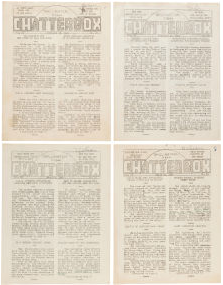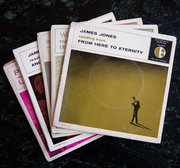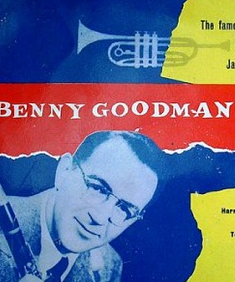 A collection of 25 issues of the Shillington High School newspaper, the Chatterbox—to which John Updike contributed both artwork and written features—is being sold on April 2 by Heritage Auctions.
A collection of 25 issues of the Shillington High School newspaper, the Chatterbox—to which John Updike contributed both artwork and written features—is being sold on April 2 by Heritage Auctions.
Interested buyers may also place bids online, starting now. The minimum opening bid is $2000. The mimeographed issues of the Chatterbox are from the collection of the late Barry Nelson, a classmate of Updike’s and the sports editor of the newspaper while Updike was on the staff.
The 25 issues are from Updike’s junior and senior years, and include 81 contributions from him—including his famous “Ode to the Seniors” poem, in which the first letter of each line collectively spelled “Seniors Stink.”
A full list of the publications is at the Heritage Auctions website. Note that a 25 percent buyer’s premium will be added to the winning bid.





